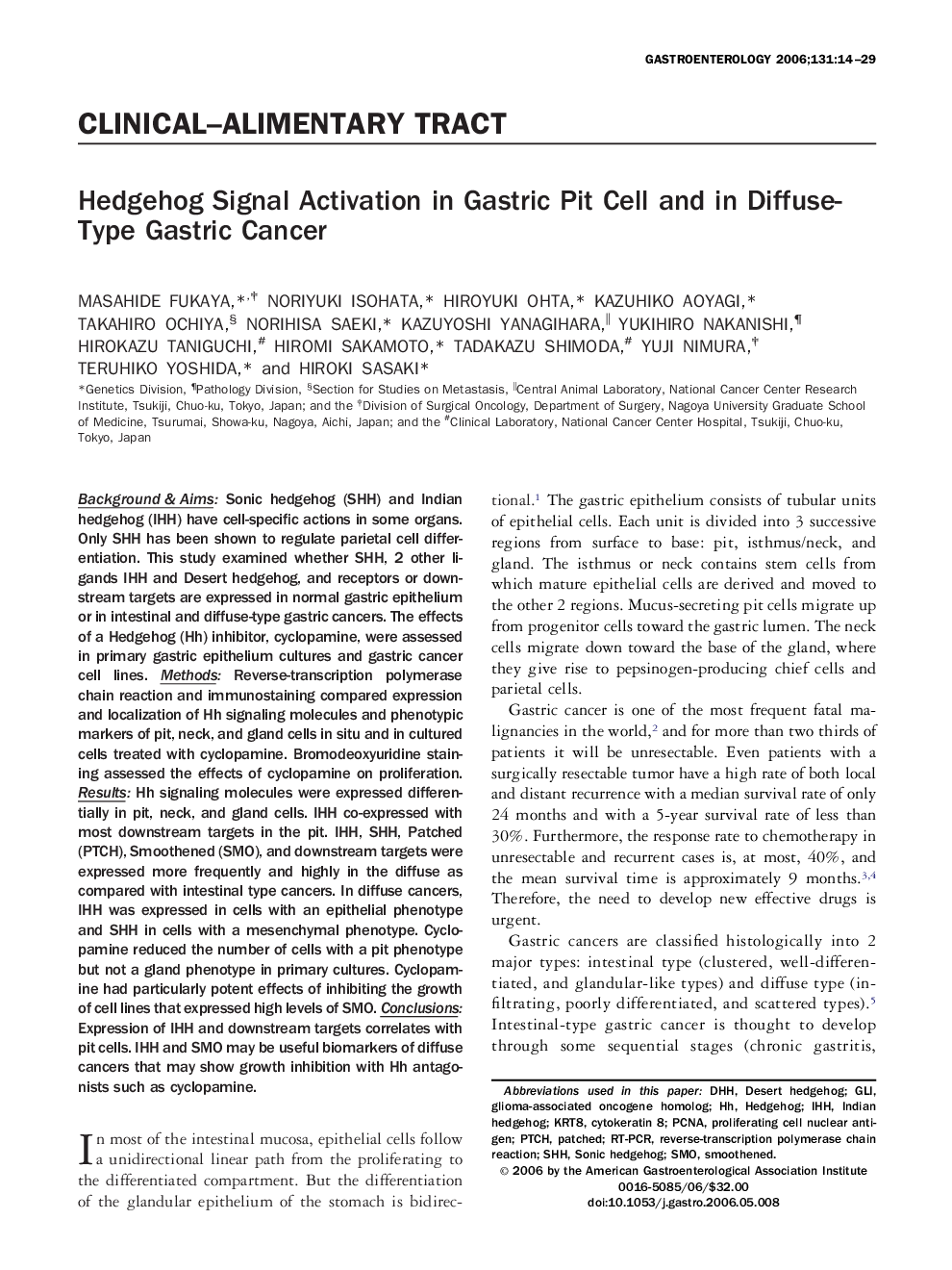| Article ID | Journal | Published Year | Pages | File Type |
|---|---|---|---|---|
| 3298797 | Gastroenterology | 2006 | 16 Pages |
Background & Aims: Sonic hedgehog (SHH) and Indian hedgehog (IHH) have cell-specific actions in some organs. Only SHH has been shown to regulate parietal cell differentiation. This study examined whether SHH, 2 other ligands IHH and Desert hedgehog, and receptors or downstream targets are expressed in normal gastric epithelium or in intestinal and diffuse-type gastric cancers. The effects of a Hedgehog (Hh) inhibitor, cyclopamine, were assessed in primary gastric epithelium cultures and gastric cancer cell lines. Methods: Reverse-transcription polymerase chain reaction and immunostaining compared expression and localization of Hh signaling molecules and phenotypic markers of pit, neck, and gland cells in situ and in cultured cells treated with cyclopamine. Bromodeoxyuridine staining assessed the effects of cyclopamine on proliferation. Results: Hh signaling molecules were expressed differentially in pit, neck, and gland cells. IHH co-expressed with most downstream targets in the pit. IHH, SHH, Patched (PTCH), Smoothened (SMO), and downstream targets were expressed more frequently and highly in the diffuse as compared with intestinal type cancers. In diffuse cancers, IHH was expressed in cells with an epithelial phenotype and SHH in cells with a mesenchymal phenotype. Cyclopamine reduced the number of cells with a pit phenotype but not a gland phenotype in primary cultures. Cyclopamine had particularly potent effects of inhibiting the growth of cell lines that expressed high levels of SMO. Conclusions: Expression of IHH and downstream targets correlates with pit cells. IHH and SMO may be useful biomarkers of diffuse cancers that may show growth inhibition with Hh antagonists such as cyclopamine.
